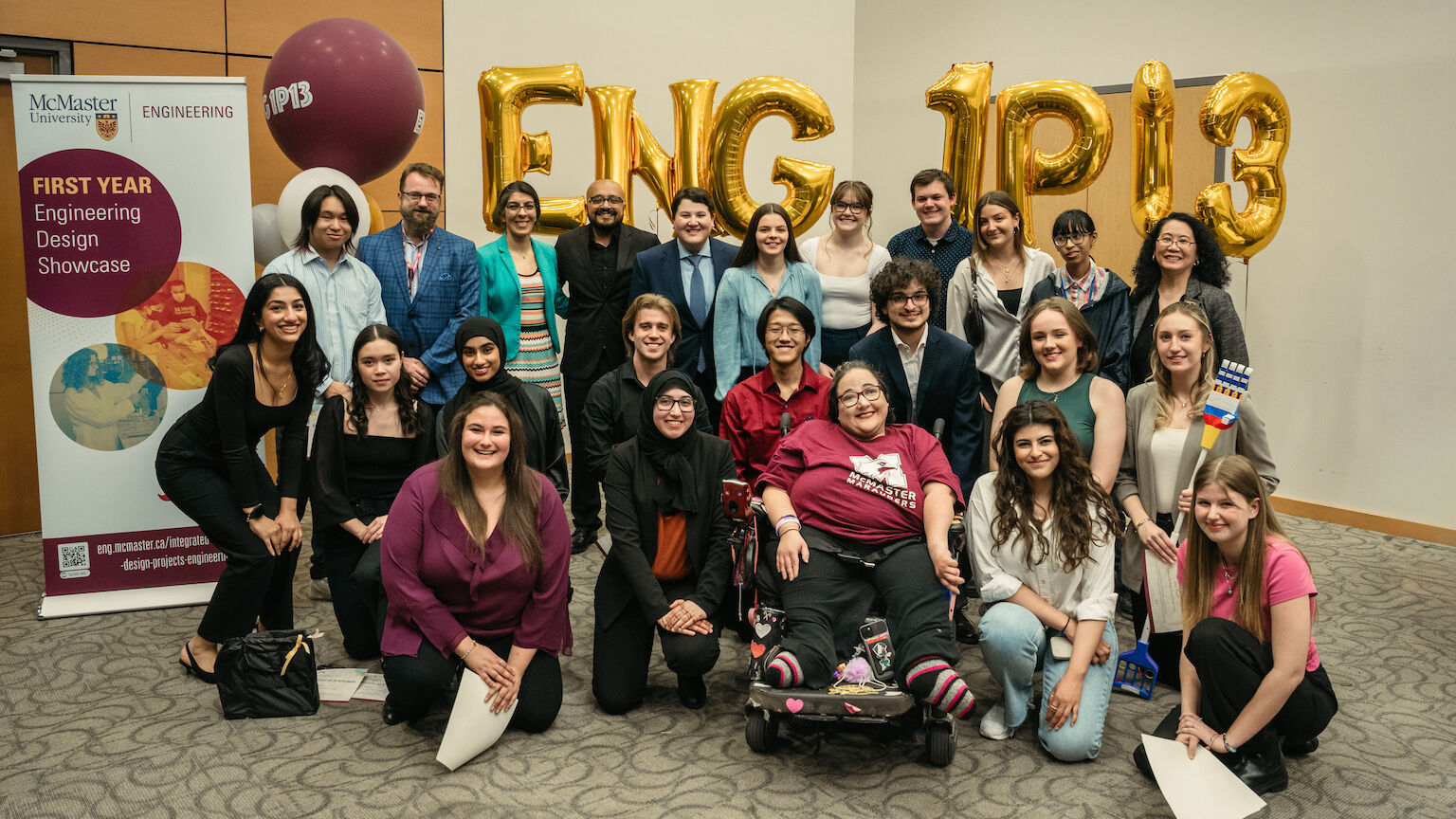
For Tiffany Garvey, life in a wheelchair is all she has ever known. Born with spina bifida, she uses a power wheelchair to support her in navigating everyday life.
While day to day life may look different for Garvey, it hasn’t slowed down her pursuit of her passions. When she’s not stocking the shelves or greeting customers at the door of her job at Walmart, Garvey can be found working up a sweat in the martial arts studio where she just received her orange belt.
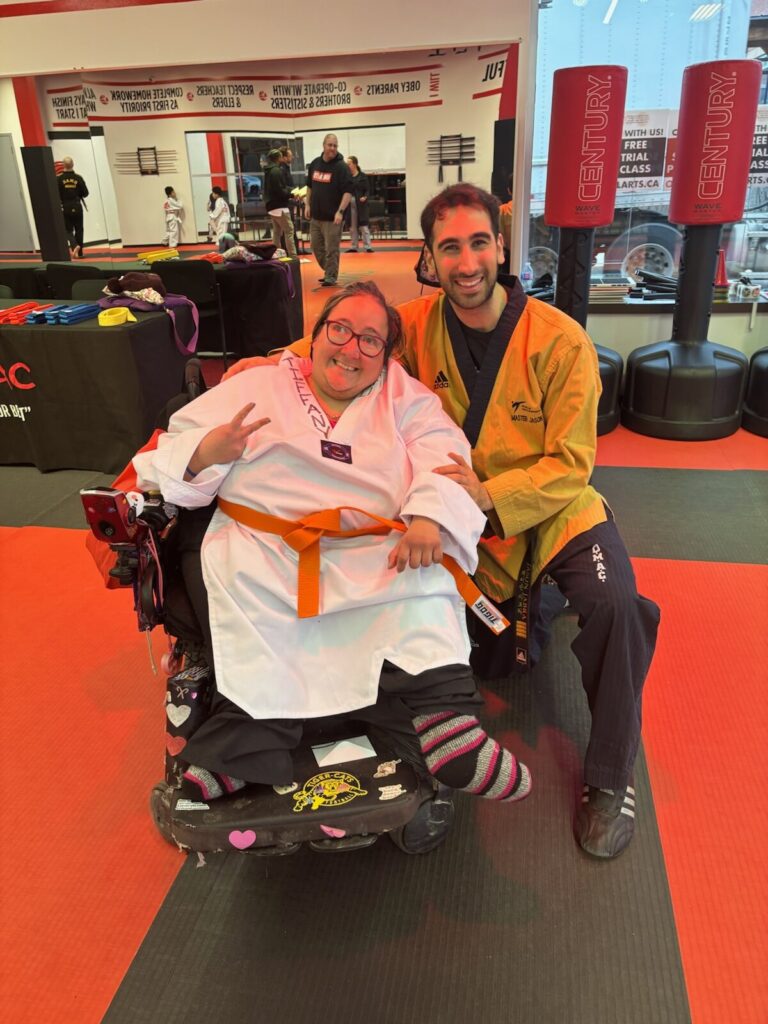
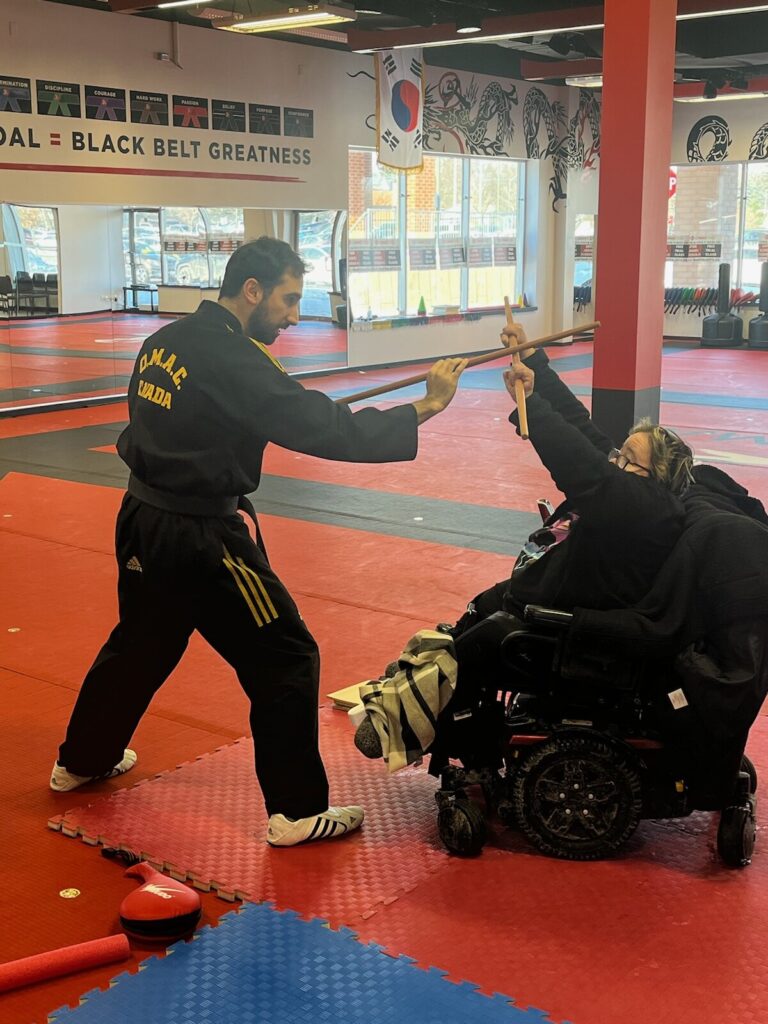
“It is my passion to bring forward the struggles that people with disabilities go through and enlighten and maybe change the narrative of just because someone has a disability, doesn’t mean we can’t do it,” says Garvey. “We may be different but where there is a will, there’s always a way to find around the challenges that life throws at us.”
In the spirit of creating a world that is more accessible to people of all abilities, Garvey was introduced to students in McMaster’s Faculty of Engineering first-year design course.
Student-driven learning experience
The Integrated Cornerstone Design Projects in Engineering course – or ENGINEER 1P13 –brings together a team of faculty mentors, instructional coordinators, instructional assistants, lab technicians and teaching assistants to support students in developing projects in groups. As the final project of the course, each year, the students are introduced to a client with special needs and assigned to design, prototype and build a product that strives to improve accessibility for their final project.
The ENGINEER 1P13 course’s main purpose is to teach the students different technical and professional engineering skills, explains Shelir Ebrahimi, assistant professor in chemical engineering and the course coordinator and project lead for ENGINEER 1P13.
“Over the course of eight months, these skills gradually get introduced, and reinforced, and students practice and apply them over and over within different projects, until they get to their final project where they have the opportunity to apply all the skills they have learned within the course to serve a member of the community,” says Ebrahimi.
Students were introduced to Garvey and given details about her condition, including barriers she faces regularly due to a lack of accessibility in the design of certain products or infrastructure.
Among the challenges Garvey faces is getting her wheelchair through doors that are not wide enough, operating the chair on surfaces that are not smooth and flat and being unable to reach for things from her chair, especially at work. With two metal rods in her back to help straighten her spine, the winter cold and wind can make Garvey’s susceptible to cold. However, due to skin sensitivities she cannot use a heat pad or warm water bottle.
Working actively with Garvey throughout the academic school year, student groups were able to come up with unique and innovative solutions to address her concerns.
“The wonderful thing about connecting with these students and discussing my unique perspective with them is teaching them to have accessibility front of mind in everything they do. These students are the next generation of engineering leaders who have the power and knowledge to change the world for people of all different abilities.”
Interdisciplinary collaboration
The final ENGINEER 1P13 project is part of the larger Interdisciplinary, Meaningful, Practice, Applied, Community, Transformative (IMPACT) Initiative, which involves collaboration across diverse faculty, undergraduate and graduate engineering and science students, occupational therapists, healthcare professionals and alumni. alumni.
Led by Robert Fleisig (Engineering), Lovaye Kajiura (Biology/Science), Brenda Vrkljan (Occupational Therapy), Liz Hassan (Engineering) and Ebrahimi, the initiative strives to provide students with a fulsome perspective on how to innovate real-world solutions to address pressing issues faced by communities across the city, country and globe are facing.
Engineering students collaborate with 300 science students and alumni, who are equally engaged in the learning process. They provide constructive feedback to engineering students in their roles as design reviewers and knowledge mobilizers.
“These collaborations encourage students to ‘think outside of the box’ and apply their skills to solve complex challenge. It is a model that catalyzes creativity, inspires innovation and empowers community engagement”.
ENGINEER 1P13 Design Showcase
On April 10, the top five teams, selected by the course instructional assistants and Ebrahimi, participated in the annual Design Showcase, where they presented their product to a panel of judges. On the panel was Garvey, as well as McMaster Engineering instructors and representatives from James Dyson Foundation.
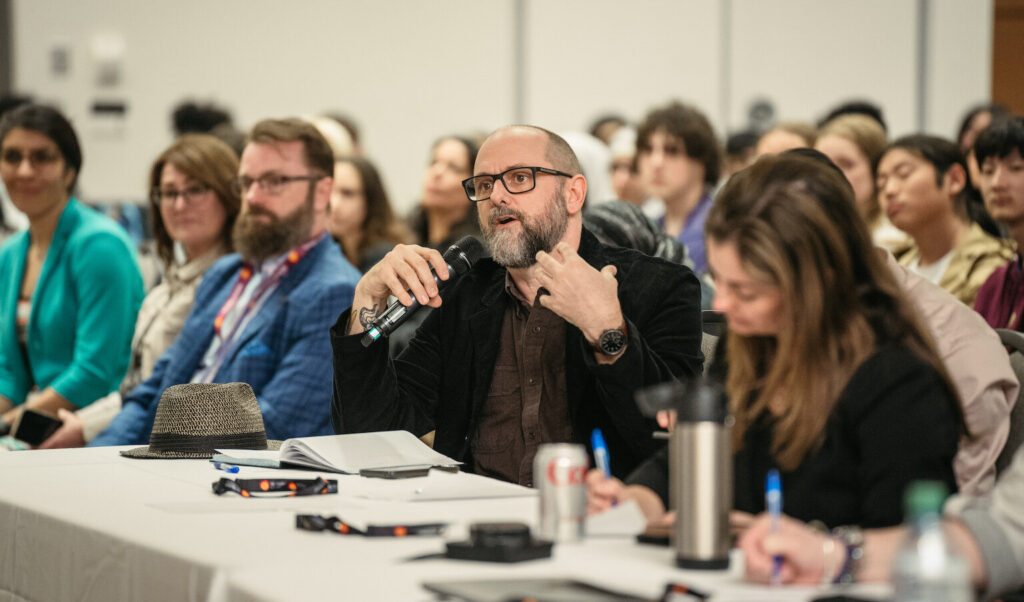
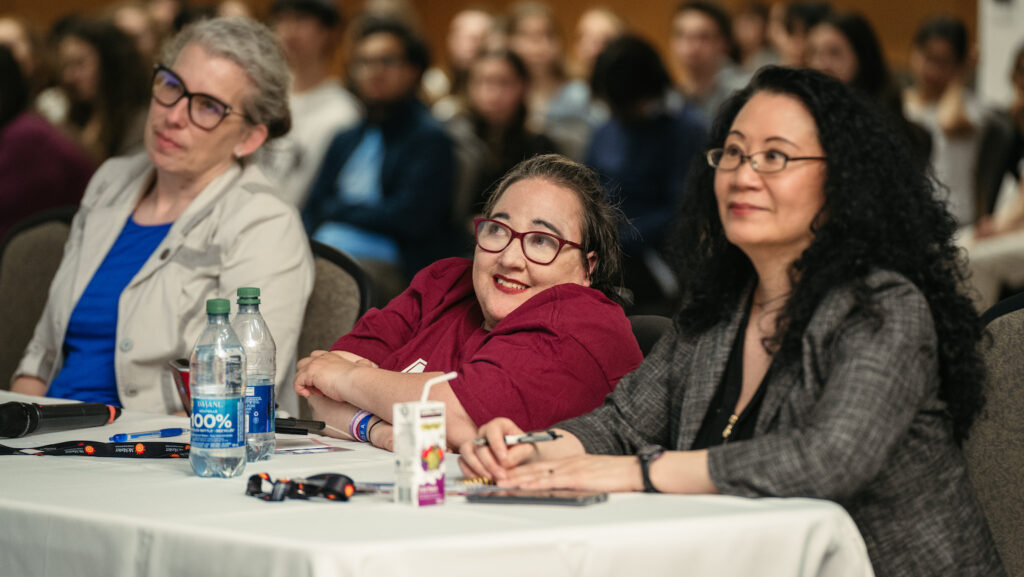
From the five teams, the top three teams are presented awards at the end of the event, with the first-place team receiving a $1000 prize from the James Dyson Foundation.
Learn about the winning projects, in the students’ own words, below:
1st place: WheelBeats
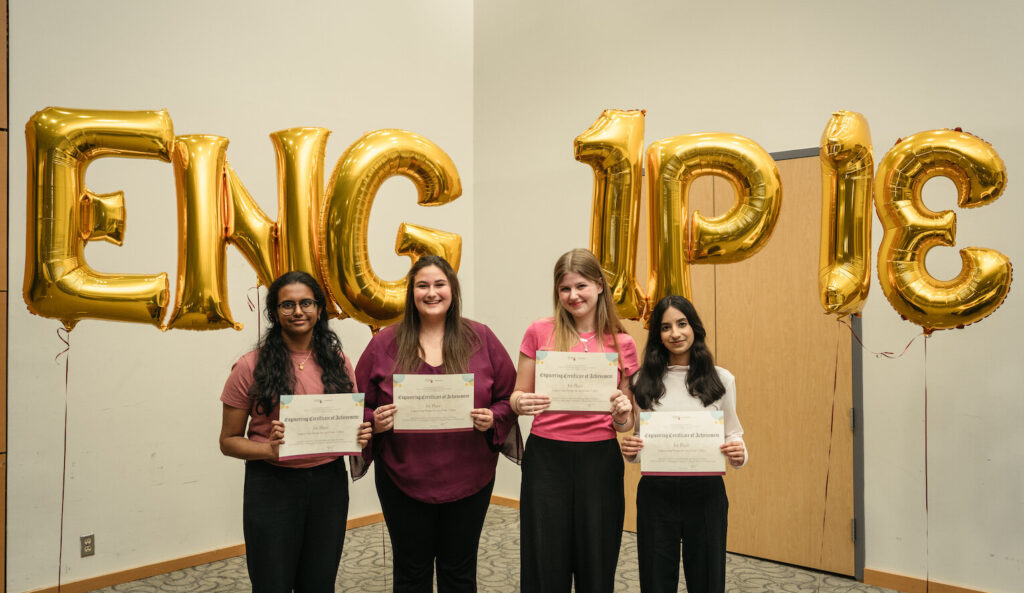
Group members: Maria Akhtar, Jocelyn Kuntsi, Cate Prince and Shayaha Jeyaseelan
Our project, WheelBeats, is a progressive web app designed to provide accessibility details for concert venues and real-time updates on upcoming events, aimed at empowering individuals with disabilities to enjoy live events without barriers. We hope this project will make a tangible difference in the lives of individuals like our client, allowing them to plan for and attend concert and sports events with confidence and ease.
The inspiration behind this project stemmed from recognizing the challenges faced by our client when planning for live events. She shared the frustrations of searching for accessibility information on venue websites, often buried deep within multiple pages or requiring direct communication with the venue. Her experience attending a concert included struggling with seating options, ultimately resorting to watching the event through her phone due to viewing constraints. Our project prioritized a user-centric approach: reaching out to venues directly for accessibility information and displaying it through an intuitive user interface that adheres to AODA web standards, ensuring inclusivity and ease of access for all users.
2nd place: A Helping Hand

Group members: Stefanie Palmer, Charolette Breen, David Bishop, Karam Farajallah, Lynn Thant
A Helping Hand is an innovative human hand shaped grabber that provides great dexterity and adaptability when grabbing many different sized and shaped objects. It can also perform a variety of tasks including pressing buttons and plugging outlets due to the independently moving fingers and corresponding triggers. For proper portability, we also made our grabber retractable so it can be taken anywhere on the go.
Our client Tiffany’s desire to be active in her community inspired us to make something that could maximize her ability to do so. From stocking produce at her job to being able to reach an outlet to charge her wheelchair battery, we wanted to create an extension of Tiffany that she could rely on to help with everyday tasks.
We hope A Helping Hand can ultimately enhance the quality of life for individuals with mobility limitations by providing them with a practical and effective solution to overcome physical barriers and improve their overall independence from day-to-day life to the workplace.
